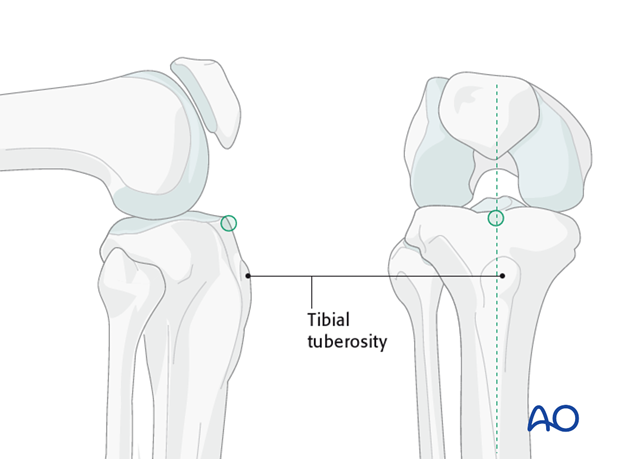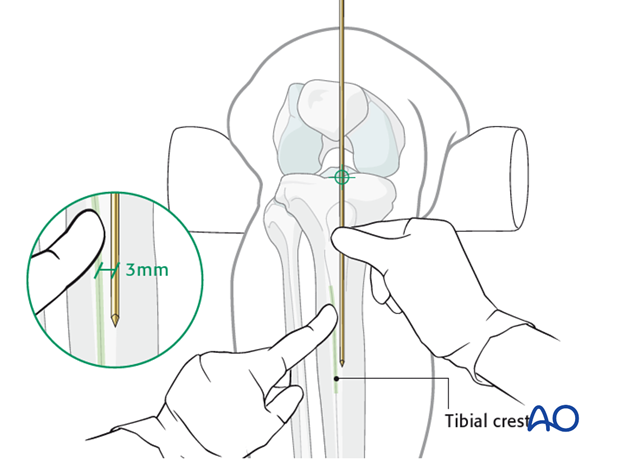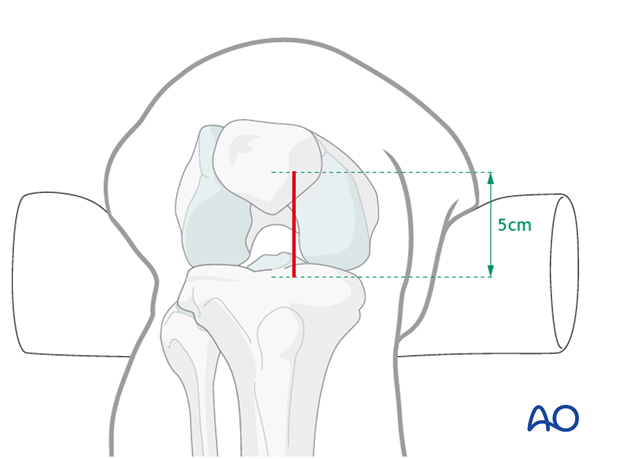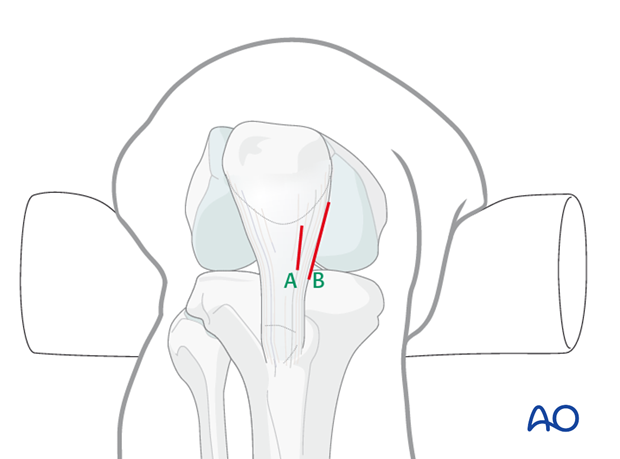Approach for intramedullary nailing of the tibial shaft
1. Determination of the entry point
In the frontal plane, the entry point is located in line with the medullary canal (3 mm medial of the tibial crest). In the sagittal plane, the entry point should be located just distal to the angle between tibial plateau and anterior tibial metaphysis.

To find the correct entry point, identify the tibial crest and place a guide wire along it, extending proximally over the knee.
The correct insertion point will be at the intersection of the guide wire with the tibial plateau.

2. Skin incision
Make a longitudinal skin incision over the planned entry point. Extend it 3-5 cm proximally from the level of the tibial plateau.
An incision that is too medial interferes with proper entry into the medullary canal.

3. Tendon incision
The incision may go either through or around the patellar tendon. It is important that it be made directly in line with the medullary canal. This may only be possible by going through the tendon (a), but if the tendon can be retracted sufficiently for direct access, this is also possible (b).
Proximal tibial shaft fractures tend to develop a valgus deformity if the nail entry site is placed too medially. A more laterally placed skin incision may be needed to avoid this problem.
Studies have found no difference in knee pain between an incision through or beside the patellar tendon.













